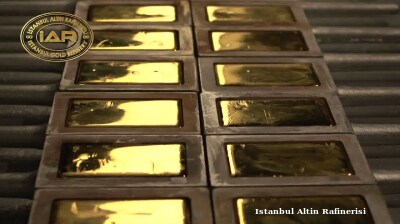Recent renewed conflicts over a controversial gold mine have highlighted the Armenian government’s continuing indecisiveness over the future of the project.
On August 4, clashes between activists, local residents, police, and mining company officials broke out at the entrance of the mine, near the eastern Armenian city of Jermuk. Officials from the company operating the mine, Lydian Armenia (the local subsidiary of a British mining firm), attempted to remove some cabins that had been set up by activists who have been protesting there since 2018, and to replace them with new cabins for company guards.
The activists complained that the guards, from a recently hired security company, had been behaving inappropriately. “They are armed, provoking people, swearing at them,” activist Themnine Yenokyan told the local service of RFE/RL. The protesters are demanding that the government cancel the project, which they say will badly damage the surrounding ecology and the water supply.
The mine contract, which was signed by the previous government, ousted by Prime Minister Nikol Pashinian in 2018, has been one of the most sensitive issues that the new government has had to face. It has pitted grassroots activists, of the type that were instrumental in bringing Pashinian to power, against proponents of the project – including Western embassies and investors – who insist that it will provide the kind of jobs that he has promised.
In an effort to resolve the deadlock, Armenia’s Investigative Committee ordered an environmental impact assessment, which was released a year ago and which Pashinian took as a green light to let the development of the mine proceed. The impact to groundwater resources would be as small as "washing a car on the beach," he said last August.
But just two weeks later, his government reversed course following a spirited public debate, and said it would study the issue further. Since then the issue has languished, one that to many Armenians has exemplified the government’s inability to make difficult decisions. Lydian, meanwhile, has threatened to sue if the government cancels the project.
At Amulsar, eventually police removed the Lydian-installed cabins, representing a victory for the protesters.
The demonstrations then moved to Yerevan. On August 10, several activists picketed parliament with signs like “Amulsar is a mountain, our struggle is just.” Police soon broke up the protests.
“They started to inflict violence on me and others WITHOUT ANY WARNING OR DEMAND,” one of the activists, Arman Gharibyan, posted on Facebook (in English). “I was screaming that their actions are illegal that they don't have the right to arrest me. Nobody was listening. Later in the police unit they were not giving me even a glass of water telling that there is no water in the unit and nearby shops.”
The government has remained silent over the recent developments.
Human rights activist Nina Karapetyants told journalists covering the protest in front of parliament that, “If this was before the revolution, 40-50 percent of [members of the current] National Assembly would be by our side. Today, they value their positions and bonuses much higher than the words and rights of their friends, their voters and the people.” She said the silence of the authorities suggested that they were waiting “to see whoever wins and then stand by them.”
Ani Mejlumyan is a reporter based in Yerevan.
This article originally appeared on Eurasianet here.
Features

BEYOND THE BOSPORUS: Prosecutors make move on “fictitious export schemes” of Istanbul Gold Refinery
Observers point to intra-regime gangs seizing each other’s wealth, remember Erdogan’s “Hello Fatih” phone calls and ponder whether wanted man Turgay Ciner is in London.

Taliban visit to India upsets Pakistan, signals New Delhi's changing Afghan posture
Coinciding with the visit, Pakistan conducted military operations inside Afghanistan, followed by airstrikes on multiple border towns. Retaliation against Pakistan's police training facilities and border outposts followed.

Pakistan’s India-shaped chip on the shoulder, and why a peaceful coexistence is as elusive as ever
Pakistan must first redefine how it sees India - not solely as a threat to be contained but as a neighbour with whom coexistence is unavoidable. That psychological leap has eluded generations of Pakistani leaders.

Trump shocked by China’s move on rare earths, threatens more 100% tariffs
"Some very strange things are happening in China!" Trump wrote in a post on his Truth Social account on October 10, adding "They are becoming very hostile."




